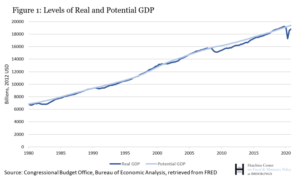This post is a summary of a YouTube video where L Randall Wray is discussing (explaining may be more accurate) that from the perspective of treasury and central bank monetary operations, “what is money?” and where it gets its value.
Below is a link to the video, which I do suggest you watch, but for the TLDR (or in this case “didn’t watch”) crowd, the summary is found below.
This is a summary, not a word for word transcript
What is money? – The core function of money
The core function of money is a “social unit of account”, which I admit, is a weird phrasing.
The money unit of account is almost always issued by a state (in the United States and Canada, the money unit is the dollar).
It is a record of debits and credits.
It is a unit of measurement, in the same way, that “inches”, “centimetres”, “pounds”, and “kilograms” are.
The idea of “what is money” is confused somewhat by the fact that the name of the measurement unit is also the name of a physical object which represents the unit. US dollars, for example.
The dollar is both the name of the unit of measure and the name of the greenback note representing the unit of measure.
There is a hierarchy of money “things” or tokens
As economist Hyman Minsky used to say, anyone can issue money, the challenge is getting someone else to accept it.
The money tokens issued by the US government are very widely accepted. Are considered to be a high value compared to others.
If I, or you, were to issue IOUs, they could serve the purpose of money, but it’s unlikely anyone would be willing to accept them.
Money “things” or tokens are much more widely accepted when they’re denominated in the money unit of account of the issuing state.
What backs the value of money?
Look at what it says on the bills and coins.
- US dollar: “this note is legal tender for all debts, public and private”
- Canadian dollar: “this note is legal tender”
- Australian dollar: “This Australian note is legal tender throughout Australia and its territories”
- UK Pound: “I promise the pay the bearer on the demand the sum of five pounds”.
- Euro: No legal tender laws
- Fiat?: Nothing?
Fiat?
A fiat currency is backed by the power of the issuing authority, not on any form of intrinsic value.
Since the invention of money (in the early bronze age) the state played a central role in the existence of and the acceptance of money.
This is why different nations use different currencies.
With one very modern exception, the money token is tied up with a sovereign authority, who is politically independent of other sovereign authorities and is the fiscal authority over the money they issue.
That one very modern exception is the very first experiment in multiple nations using one currency, the euro.
Taxes drive the acceptance of money
And this is essentially THE thing that makes money money.
The state imposes a tax liability, which must be paid in the money token IOU issued by the state, then they spend those money tokens into existence in the economy, in exchange for goods and services.
Technically, any form of obligation the state imposes will drive the acceptance of money, and once upon a time fees and fines played a larger role, but today that obligation exists almost exclusively in the form of taxes.
Why?
The simultaneous imposition of taxes and money is how the state provisions itself from the economy. It’s how they move resources from the private sector into the public sector.



